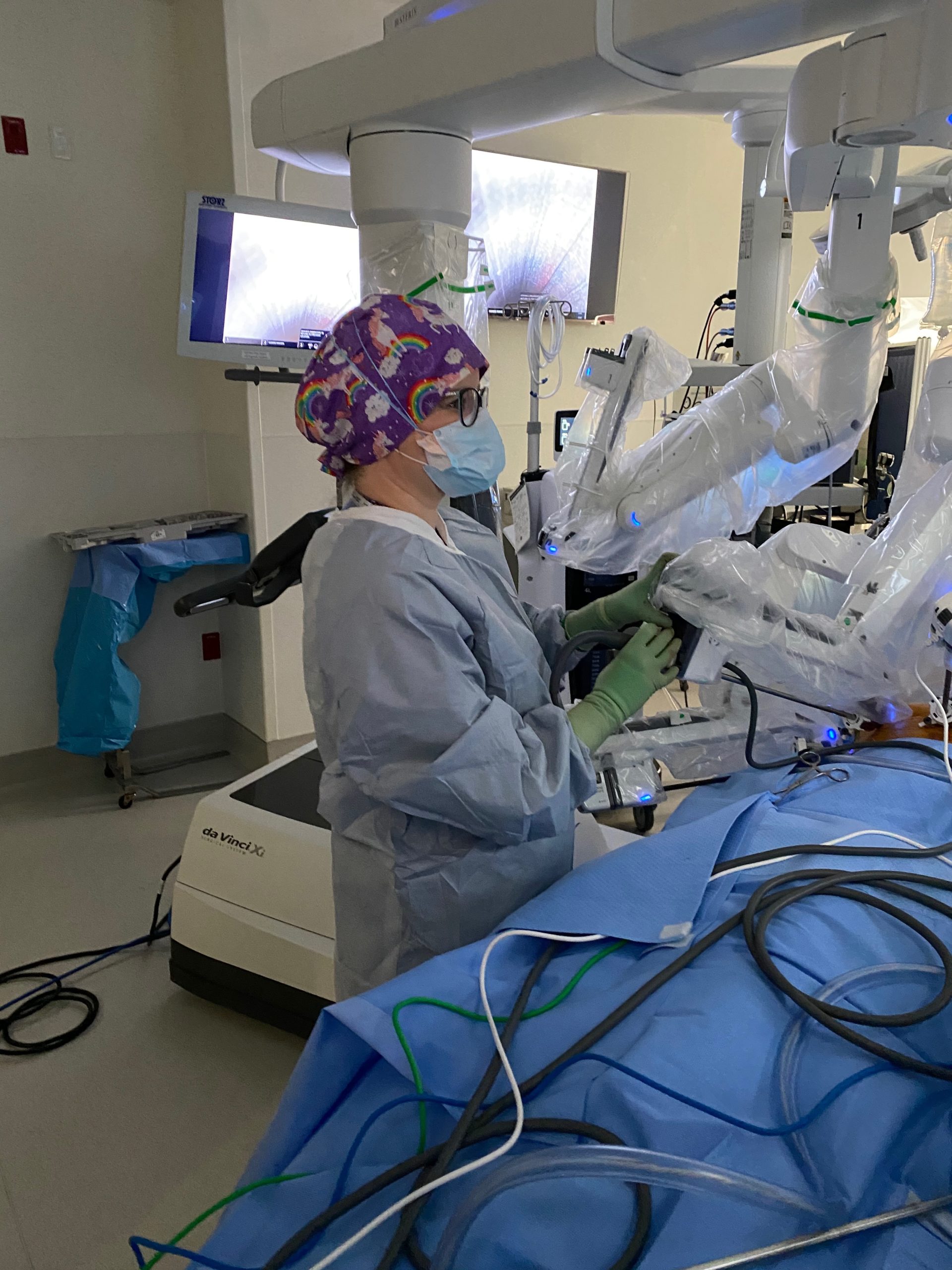Robotic surgery is becoming more and more mainstream in operating rooms. This technology is used for everything from having your gallbladder removed, a hysterectomy or prostatectomy, or a hernia repair, to lung and esophageal surgery.
CTVS has been treating thoracic disorders (those occurring between the abdomen and the neck) for more than 50 years and utilizes robotic thoracic surgery often in addressing a variety of these conditions.
What is robotic thoracic surgery?
Robotic surgery is a technique that surgeons use to perform minimally invasive thoracic surgery. Typically three-foursmall incisions between the ribs are made on one side of the chest, and a lighted camera, along with instruments, is placed into small holders called ports or tracers.
The robot is situated over the patient and holds these instruments while the surgeon works at a special console with high-definition imaging and performs the surgery by controlling the instruments. The surgeon maintains complete control and is able to conduct precise dissections in small spaces allowing for optimal surgical outcomes.
Dr. Rachel Medbery, a CTVS thoracic surgeon uses robotic surgery frequently when treating her patients.
“I perform robotic surgeries on the lung (biopsy and lobectomy), the mediastinum (lymph node dissection and mediastinal mass removal), the diaphragm (hernia repair and plication for diaphragm paralysis), and the esophagus (hiatal hernia repair, anti-reflux surgery, myotomy, esophageal lengthening, and diverticulectomy),” says Dr. Medbery.
What are the benefits of robotic thoracic surgery for the patient?
According to Dr. Medbery, robotic thoracic surgery is minimally invasive and “minimally invasive surgery affords smaller incisions, quicker recovery, shorter down time and less pain.”
Additionally she says, “if we are operating for cancer, we know that robotic surgery offers equivalent oncologic outcomes to other surgical techniques.”
Something interesting and exciting about robotic surgery is that more female surgeons are now utilizing the technology.
What kind of perspective can the female robotic surgeon bring to her patient?
“The ergonomics of the robot are wonderful for female surgeons,” she says. “Many of the traditional surgical instruments are designed for male surgeons with larger hands. But the robot allows for finer movements and dissection without the use of larger instruments.”
Dr. Medbery is a passionate advocate for women who are interested in entering the field of surgery. She also adds that female surgeons are often perceived to be more empathetic with their patients, and that trait, coupled with a willingness to adopt new technologies (such as robotic surgery), makes for a winning combination in a doctor.
If you have questions about our thoracic, cardiac, or vascular services, please visit ctvstexas.com or call us at (512) 459-8753 to schedule an appointment with one of our board-certified specialists.
Don’t forget to follow us on Facebook and Twitter and check our blog for regular updates.

